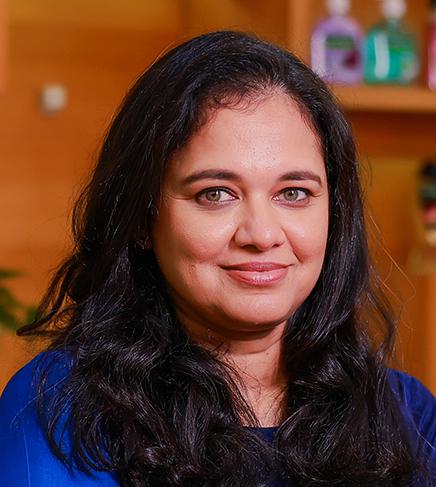

Prabha Narasimhan,
MD & CEO,
Colgate Palmolive India Ltd SUPPLIED PIC
For Colgate Palmolive, India is a ‘key growth engine’, says MD & CEO
Colgate-Palmolive (India) Ltd is sharply focusing on growing consumption and driving premiumisation in the oral care segment.
The India business will continue to be a key growth engine for the US consumer products major, a top executive stated.
Speaking at a conference on Friday, Prabha Narasimhan, Managing Director & CEO, Colgate-Palmolive (India) Ltd, said, “Oral care has tremendous potential to grow in India. While the penetration has now reached universality, whether it is urban or rural India, consumption still lags.”
“So, when compared to a market like the Philippines, urban consumption of toothpaste in India is at only 0.7x and rural consumption, where 65 per cent of the population lives, is half that of the Philippines.”
more opportunities
Nearly 80 per cent of urban India does not brush their teeth twice a day and only one out of two rural consumers brush daily.
“So, on both vectors, whether it’s consumption or its value, there are tremendous opportunities for us to grow.
“And we look at this opportunity to increase household penetration on three vectors: how can we get in more product; to more people and get more money out of it,” she added. The company said it is leveraging technology in areas such as delivering superior products, distribution and raising awareness about oral care, like offering consumers AI-generated dental report on their phones.
Strong business
Narasimhan, who was addressing a conference organised by the Consumer Analyst Group of New York (CAGNY) on Friday in the US, said that Colgate Palmolive India is an “exceptionally strong business” sitting in a country that has “tremendous headroom opportunity for growth.”
Income to grow
“We think we have really world-class execution that will allow us to capitalise on this opportunity, and continue to remain the growth engine for Colgate Palmolive in total,” she added. By 2030, India is projected to have 200 million households in the middle and upper income bracket as per estimates.